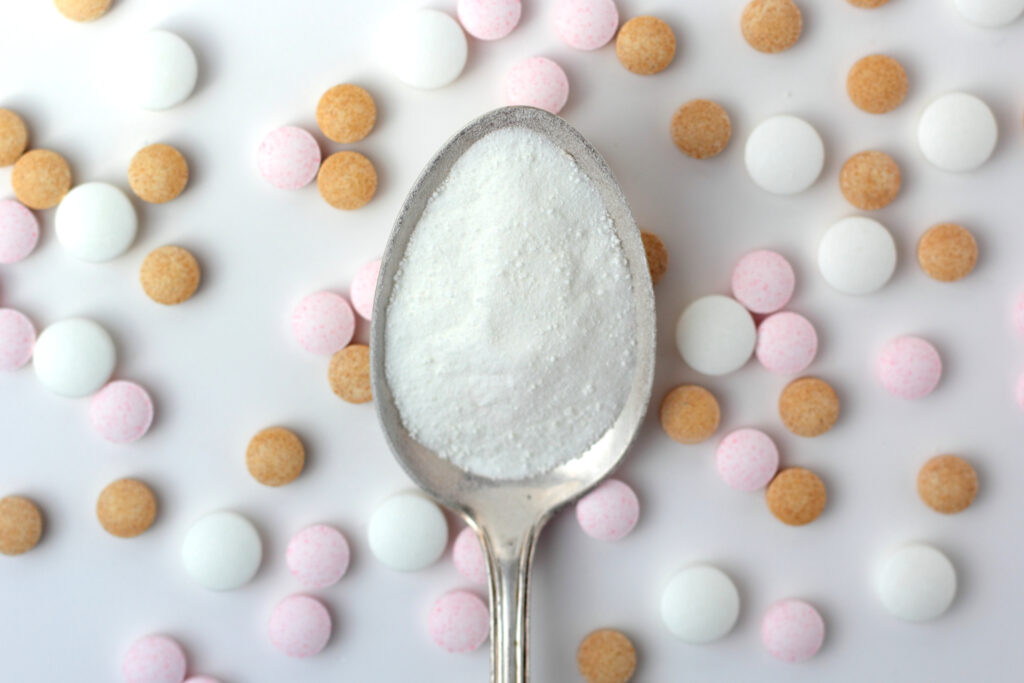Why Women Over 40 Struggle with Insulin Resistance and How to Improve It

If you’ve hit 40 and suddenly feel like your metabolism has taken an unexpected holiday, you’re not the only one. The stubborn belly fat, sugar cravings that won’t quit, and energy crashes that hit like a tonne of bricks? They could all be signs of insulin resistance creeping in. This silent disruptor makes weight loss harder, messes with your hormones and puts you at higher risk for metabolic disorders. But here’s the good news: with the right lifestyle tweaks, you can reset your body’s sensitivity to insulin, reclaim your energy and feel like yourself again.
The Insulin Resistance Struggle After 40
Insulin resistance happens when your body’s cells stop responding properly to insulin, the hormone responsible for moving glucose from your bloodstream into your cells for energy. When cells resist insulin’s signals, your pancreas pumps out even more insulin to compensate, leading to excess levels in your blood. Over time, this not only makes weight loss feel impossible, but it can also increase the risk of type 2 diabetes, heart disease and chronic inflammation.
Women over 40 are especially vulnerable, thanks to shifting hormones that directly impact how the body processes glucose. Symptoms like stubborn weight gain (especially around the middle), intense sugar cravings, constant fatigue, brain fog and hormonal imbalances are all telltale signs that insulin resistance may be at play.
The Link Between Hormones and Insulin Resistance
If you thought insulin was just about blood sugar, think again. Your hormones are intricately linked to how well your body manages glucose, which is why insulin resistance often kicks in as women approach perimenopause and beyond.
Estrogen is a key player in insulin sensitivity. When estrogen levels are balanced, your body processes glucose more effectively. But as estrogen starts to decline in your 40s, so does your ability to regulate blood sugar. Research has shown that lower estrogen levels are directly linked to increased insulin resistance, which can make weight loss harder and energy levels more unpredictable.
Progesterone fluctuations can also throw a wrench in blood sugar stability. Ever notice that cravings skyrocket before your period? That’s progesterone at work, influencing appetite and making you more susceptible to reaching for sugar-loaded snacks.
Cortisol, your body’s main stress hormone, plays a massive role too. Chronic stress leads to elevated cortisol levels, which in turn spikes blood sugar and increases insulin production. One study found that women with higher cortisol levels had poorer insulin sensitivity, reinforcing the strong link between stress and metabolic health.
And then there’s thyroid function. An underactive thyroid slows metabolism and impairs insulin function, making it even harder to shift weight and keep blood sugar levels stable. Research has linked hypothyroidism to higher fasting insulin levels and an increased risk of insulin resistance.

The Metabolic Consequences of Insulin Resistance in Women Over 40
So what happens when insulin resistance takes hold? For starters, weight gain becomes frustratingly inevitable. High insulin levels signal the body to store fat, particularly around the waistline, making the classic “menopause belly” a reality for many women. This isn’t just about aesthetics—belly fat is also linked to higher inflammation levels and increased cardiovascular risk.
If left unchecked, insulin resistance can also lead to type 2 diabetes. One study found that nearly half of individuals with insulin resistance go on to develop diabetes if they don’t take action early.
Beyond weight and diabetes risk, insulin resistance is a major driver of inflammation, which impacts everything from heart health to cognitive function. Emerging research even links insulin resistance to cognitive decline, sometimes calling it “Type 3 diabetes” due to its association with Alzheimer’s and brain fog.

How to Test for Insulin Resistance
You might assume that a simple blood sugar test would catch insulin resistance, but that’s not always the case. Many women with insulin resistance still have normal blood sugar levels until the condition worsens. To get a full picture, consider more comprehensive tests.
Fasting insulin levels give insight into how much insulin your body is producing to keep blood sugar in check. While conventional lab ranges consider anything under 25 mIU/L as normal, optimal levels are usually under 10 mIU/L.
The HOMA-IR (Homeostatic Model Assessment for Insulin Resistance) is a more accurate indicator, as it calculates insulin resistance based on both fasting glucose and insulin levels.
HbA1c measures average blood sugar over the past three months, helping to detect prediabetes, though it may not pick up early-stage insulin resistance.
Your triglyceride-to-HDL ratio is another underrated but powerful marker. A high ratio suggests poor metabolic health and an increased risk of insulin resistance.
Natural Strategies to Improve Insulin Sensitivity
The best part about insulin resistance? It’s highly reversible with the right lifestyle changes. Here’s what works best for women over 40:
Dietary strategies
Balancing blood sugar starts with choosing the right foods. Prioritising protein and healthy fats helps slow glucose absorption, preventing blood sugar spikes and crashes. Fibre-rich foods, like vegetables, legumes and whole grains, also play a crucial role in keeping insulin levels stable.
Cutting back on processed carbs and refined sugars is a game changer. Studies show that diets high in refined carbohydrates significantly contribute to insulin resistance, while whole food-based diets help improve glucose metabolism.
Intermittent fasting can work well for some women, but it’s not a one-size-fits-all solution. If fasting causes energy dips or worsens hormonal imbalances, a more balanced approach with steady meal timing may be a better fit.

Exercise and movement
Strength training is one of the most effective ways to boost insulin sensitivity. Since muscle tissue is a primary site for glucose uptake, increasing muscle mass helps the body manage blood sugar more effectively.
Walking after meals is an underrated but incredibly effective tool for stabilising blood sugar. Research found that walking for just two-five minutes after eating significantly improved post-meal glucose control.
HIIT workouts and steady-state cardio both support insulin sensitivity, but women over 40 should find the right balance. Too much intense exercise can spike cortisol, which can backfire for those already dealing with high stress.
Manage stress and sleep
Chronic stress wreaks havoc on blood sugar levels. Practices like meditation, deep breathing and yoga can lower cortisol and improve insulin sensitivity. A study found that mindfulness practices significantly reduced cortisol and improved metabolic health.
Sleep is another critical piece of the puzzle. Poor sleep increases insulin resistance and leads to sugar cravings. Aim for 7–9 hours of high-quality sleep by sticking to a consistent bedtime routine and limiting blue light exposure in the evening.
Gut health and insulin sensitivity
A healthy gut microbiome plays a crucial role in regulating blood sugar. Beneficial bacteria help metabolise glucose, while an imbalance in gut bacteria has been linked to insulin resistance. Studies suggest that a diverse gut microbiome is associated with better glucose control.
Adding probiotic-rich foods like yoghurt, kefir and sauerkraut, as well as prebiotic foods like garlic, onions and asparagus, can help support gut health and metabolic function.
The bottom line
Next Steps
Insulin resistance is common in women over 40, but it doesn’t have to be inevitable. Balancing hormones, managing stress and prioritising sleep are just as important as diet and exercise when it comes to metabolic health.
Regular testing can help detect early signs before they turn into bigger health concerns. Making small, consistent changes to diet, movement and lifestyle can significantly improve insulin sensitivity and overall well-being.
The sooner you take action, the easier it is to reset your metabolism and feel energised again. Your 40s and beyond don’t have to be about struggling with weight gain and exhaustion—when you work with your body instead of against it, you can thrive at any age.





